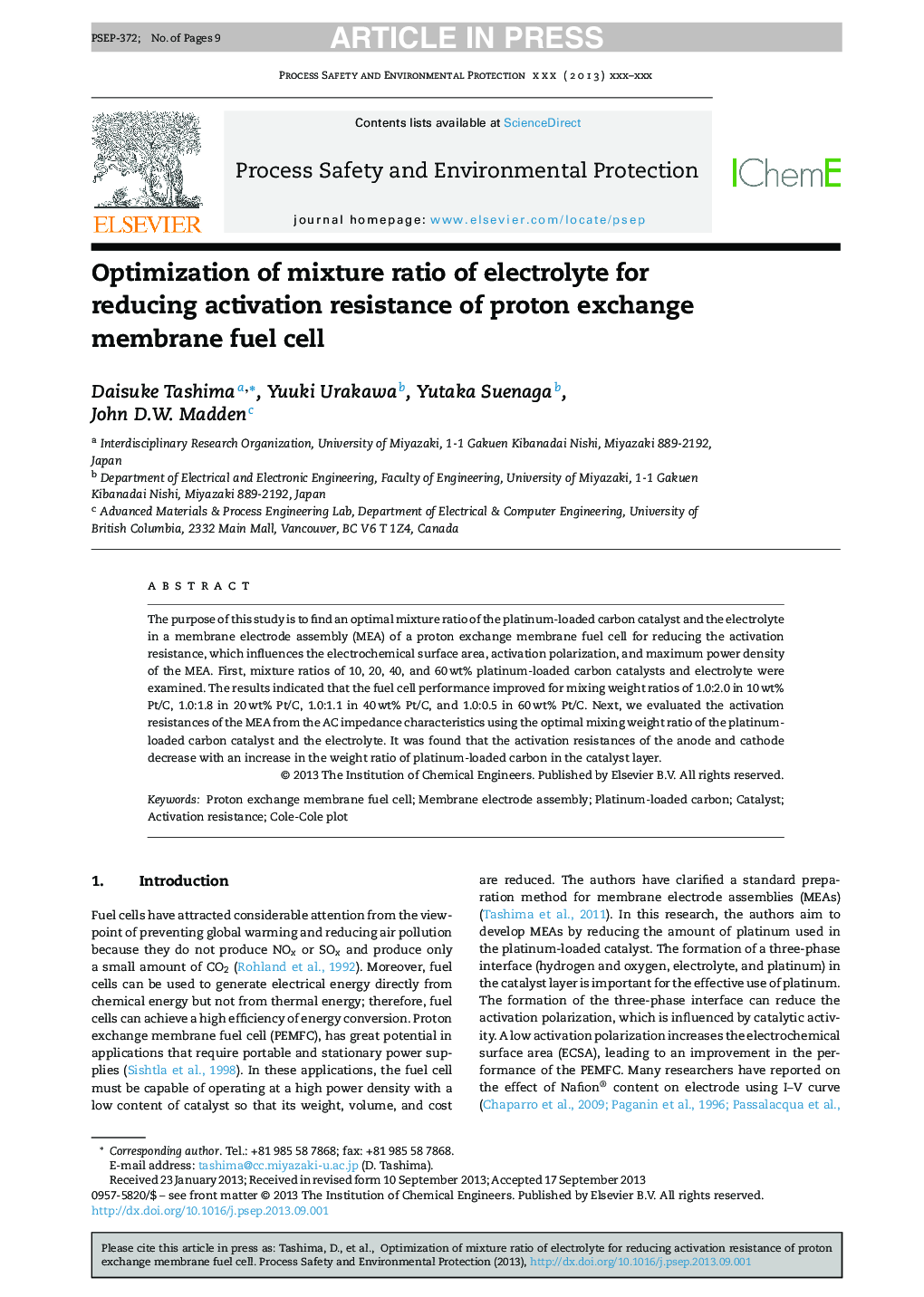| Article ID | Journal | Published Year | Pages | File Type |
|---|---|---|---|---|
| 10373933 | Process Safety and Environmental Protection | 2014 | 9 Pages |
Abstract
The purpose of this study is to find an optimal mixture ratio of the platinum-loaded carbon catalyst and the electrolyte in a membrane electrode assembly (MEA) of a proton exchange membrane fuel cell for reducing the activation resistance, which influences the electrochemical surface area, activation polarization, and maximum power density of the MEA. First, mixture ratios of 10, 20, 40, and 60Â wt% platinum-loaded carbon catalysts and electrolyte were examined. The results indicated that the fuel cell performance improved for mixing weight ratios of 1.0:2.0 in 10Â wt% Pt/C, 1.0:1.8 in 20Â wt% Pt/C, 1.0:1.1 in 40Â wt% Pt/C, and 1.0:0.5 in 60Â wt% Pt/C. Next, we evaluated the activation resistances of the MEA from the AC impedance characteristics using the optimal mixing weight ratio of the platinum-loaded carbon catalyst and the electrolyte. It was found that the activation resistances of the anode and cathode decrease with an increase in the weight ratio of platinum-loaded carbon in the catalyst layer.
Related Topics
Physical Sciences and Engineering
Chemical Engineering
Chemical Health and Safety
Authors
Daisuke Tashima, Yuuki Urakawa, Yutaka Suenaga, John D.W. Madden,
